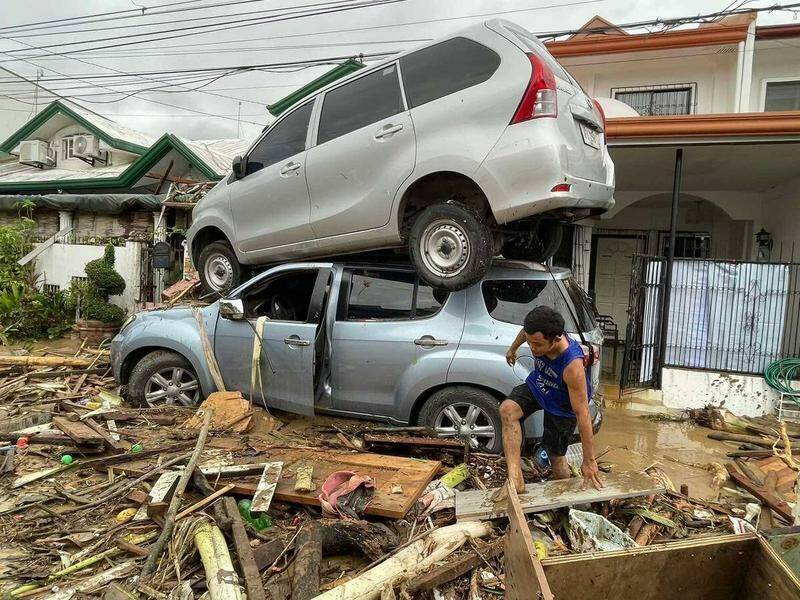
The death toll from Typhoon Kalmaegi has risen to four as the storm continues to unleash heavy rain and floods across the central Philippines. The powerful weather system has submerged homes and forced thousands to evacuate, with reports of significant destruction in several provinces.
Kalmaegi, known locally as Tino, made landfall on September 26, 2023, and while it has weakened, it still produced winds of up to 130 km/h and gusts reaching 180 km/h as it moved across the Visayas islands and northern Palawan towards the South China Sea. According to provincial information officer Ainjeliz Orong, three fatalities have been confirmed in the central province of Cebu, with at least one person reported missing. Two additional deaths are currently being verified.
In the nearby province of Bohol, a disaster official reported that one individual was killed by a falling tree. Anthony Damalerio, the disaster official, emphasized the unexpected intensity of the flooding, stating, “We weren’t expecting this much flooding.”
Evacuations have affected tens of thousands of residents across the Visayas region, including parts of southern Luzon and northern Mindanao, as reported by the national disaster agency. The Philippine Red Cross released photos and videos showing rescue workers navigating knee-deep floodwaters in Cebu City, utilizing boats to reach those stranded.
In Liloan, a town on the northern outskirts of Cebu City, homes were submerged, leaving only rooftops visible. Similar scenes of vehicles and streets under water circulated widely on social media, highlighting the extensive impact of the storm.
The state weather agency, PAGASA, attributed the intense rainfall and strong winds to a combination of Kalmaegi and a shear line affecting the area. On the same day, over 180 flights to and from the affected regions were cancelled, and maritime authorities advised vessels to seek safe harbors immediately.
PAGASA also issued warnings about the high risk of “life-threatening and damaging storm surges” that could exceed three meters in height along coastal and low-lying communities in central Philippines, including parts of Mindanao.
As the Philippines grapples with the aftermath of Typhoon Kalmaegi, the government of Vietnam is preparing for the typhoon’s potential impact on its central regions, which have already faced severe flooding this month. The Vietnamese government stated that Kalmaegi is expected to make landfall in their territory on September 28, 2023, and has urged citizens to be vigilant.
Kalmaegi’s arrival follows a series of natural disasters in the Philippines, which typically experiences around 20 tropical storms each year. The nation is still recovering from a recent sequence of earthquakes and severe weather events, including Super Typhoon Ragasa, which struck northern Luzon in September and forced extensive government and educational shutdowns due to its damaging winds and heavy rainfall.
As the situation continues to develop, authorities are working diligently to provide assistance and support to affected communities, with the full extent of damage and recovery efforts still unfolding.







